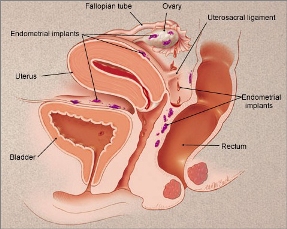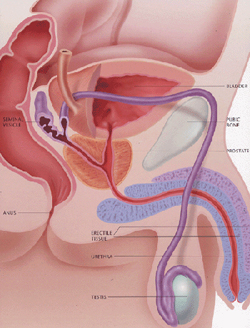What is Infertility?
Inability of the couple to conceive 12 months of regular sexual life without the use of contraception is referred to as infertility. It may be primary where conception has never happened or secondary where there is difficulty in conceiving again.
Causes of Infertility :
The causes of infertility can be grouped under three main heads:
- Female factors
- Male factors
- Unexplained causes
Infertility due to Female factors
The main causes of infertility in women can be divided into following :
- Disorders of Ovulation
- Tubal factors
- Uterine abnormalities
- Others
A) Disorders of Ovulation
The process of ovulation is a very complex balance of hormone production and interaction. Any derangement may lead to anovulation where the egg formation which happens regularly every month fails, thus leading to infertility. Failure of ovulation is seen mainly in the following cases –
- Polycystic ovarian disease
- Obesity
- Hypogonadotrophic state with low FSH and LH
- Hypergonadotrophic state with high FSH and LH ( premature ovarian failure)
- Iatrogenic scarring of ovaries because of repeated surgeries
- Scarring of ovaries due to infection
B) Tubal factors
Blocked tubes or poor functioning of tubes results in infertility. Tuberculosis and other severe infection may lead to complete tubal blockage. Adhesions caused due to pelvic and abdominal surgeries, endometriosis, or infections may not cause blockage of tubes but spoils the fimbrio-ovarian relationship. This leads to impairment of the pick-up of the egg by the tube which may not only lead to infertility but may also be a reason for the ectopic pregnancies. In some cases tubes may be filled with fluid ( hydrosalpinx) or purulent material ( pyosalpinx)where even the results of IVF may be impaired. In India the most common cause for this is tuberculosis. We usually advise the clipping of these tubes at the cornual ends before initiating IVF but it is done only after the couple gives the consent for the same.
i) Congenital – The commonly seen congenital abnormalities which are associated with infertility are :
- ‘T’ shaped uterus
- Bicornuate uterus
- Septate uterus
All the above may also be responsible for repeated abortions and are best diagnosed on a 3D ultrasonic examination of the cavity followed by hysterolaparoscopy.
ii) Acquired – The most important causes are :
- Uterine polyps
- Submucus fibroids
- Intrauterine adhesions due to infection
- Scarring of the uterine cavity due repeated abortions followed by evacuation, D&Cs, other surgeries
Hysteroscopic evaluation of the uterine cavity is very useful before initiating IVF because any untreated disorder of the uterine cavity leads to implantation failure leading to very poor success in IVF.
C) Uterine abnormalities
These may be congenital or acquired.
D) Others
About 10% of infertile women are diagnosed to have endometriosis. This is either diagnosed on ultrasound or on routine hysterolaparoscopic examination done as a part of infertility workup. Only few are aware of the condition due to the symptoms of severe pain and discomfort for which the treatment has already been received in early years of life. Some endocrine disorders like thyroid or hyperprolactenaemia may sometimes be responsible for infertility.
Infertility due to Male factors
It is important to treat infertility as a problem of the couple rather than seeing only one partner at a time. In about 30% of the couples presenting with infertility, it is only the husband who is responsible for infertility. The most common reasons found in cases of male infertility are:-
- Azoospermia- Absence of sperm in semen.
- Oligospermia- Decreased number of sperms in semen.
- Asthenospermia- Decreased motility of sperms in semen.
- Teratozoospermia- Abnormal morphology of sperms.
- Aspermia- Absence of semen.
In case any of the above abnormalities are found, further investigation in the form of hormonal assays and karyotyping may be advised. Testicular biopsy is done for patient with azoospermia with a normal FsH level. It is always beneficial to conduct semen analysis prior to starting investigation of the female partner. Male infertility is on the increase especially because of the lifestyle changes and is emotionally less acceptable to the couple. The most common lifestyle factors causing male infertility are as follows:-
- Smoking- Decreases sperm count, quality and motility.
- Drugs- Decrease sperm count, quality and motility.
- Chronic alcohol abuse.
- Anabolic steroids.
- Intense exercise- This cause high adrenaline rush which decreases testosterone thereby causing infertility.
- Inadequate vitamins in the diet.
- Tight clothing.
- Environmental Hazards.
- Stress.
- Obesity.
Infertility due to unexplained reasons
In 20% of all couples presenting with infertility, no cause can be detected as the cause of infertility. These patients can be helped using various ART techniques. In a few patients it has been observed that meticulous counselling to allay their anxieties and fears may result in a pregnancy. Cases have been seen where a change of environment takes away the constant pressure of having a baby resulting in surprise pregnancy.


